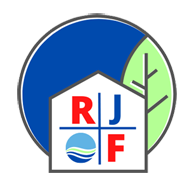RJF Environmental Consulting Services Inc is asked this question quite frequently…. “How do I know if it is mold allergies or seasonal allergies?”
The hardest thing about detecting whether you have an allergy to Mold is that it is so often mistaken for the same signs and symptoms that occur in other upper respiratory allergies. Mold allergy symptoms can include:
- Sneezing
- Constant stuffy nose
- Cough and postnasal drip
- Itchy eyes, nose and throat
- Watering eyes
- Sinusitis, an inflammation of the sinuses
Symptoms also vary from person to person, depending on age and immune health. These symptoms range from mild to severe. Some individuals will experience symptoms all year long and others may only notice symptoms when the weather is damp and or humid, or when you are in areas that have high concentrations of mold. So, one of the best predictors of “mold allergies” is if you notice that you feel better when you are not in your home, or in your office or wherever the possible mold infestation is suspected. If you get headaches, stuffiness and other symptoms when you enter a building, it could be a sign of mold or other indoor air qualities.
However, if you are experiencing these symptoms: stuffy nose, sneezing, watery eyes, or other symptoms for longer than two weeks, you should probably consult your physician to determine the source of your symptoms.
Your doctor will evaluate your symptoms and may recommend testing to try to determine if you simply have allergies or whether your symptoms are caused by something more serious.
If you believe you have mold around your house or hiding behind your walls and are suffering from any of the above symptoms for an extended period of time, we recommend having your house tested for mold or other indoor air qualities.

